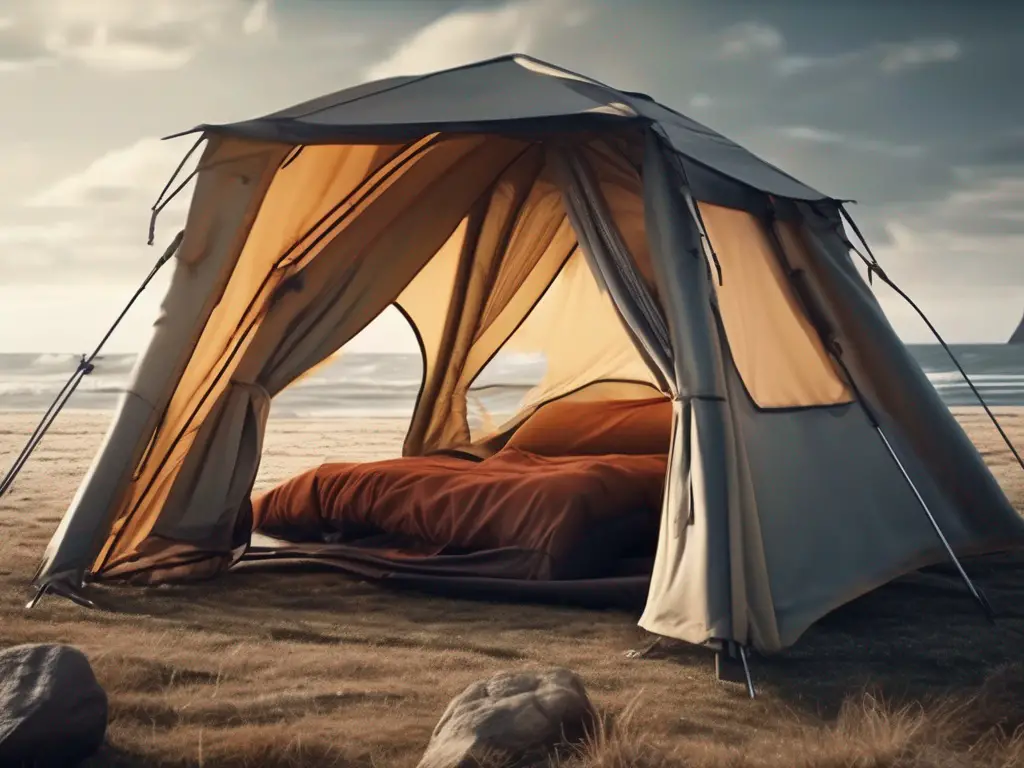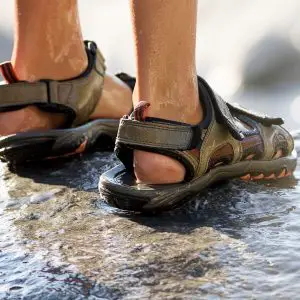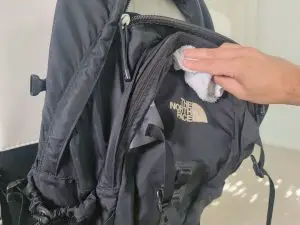How Much Wind Can A Tent Withstand? (Explained)

Ever wondered how much wind a tent can handle? If you’re a camping enthusiast planning a trip, you should. Particularly, if the weather forecast’s shaky.
Hang in there. This guide will help you understand what makes a tent withstand wind, and safety tips so you can pick the right tent. And stay safe during windy camps.
Quick Links
What Is the Maximum Wind Speed a Tent Can Handle?
The maximum wind speed a tent can handle depends on several factors, such as the tent’s design, materials, and the terrain where it’s pitched.
However, most tents can withstand winds of up to 30-40 mph, while some high-end models can withstand winds of up to 60-70 mph. Let’s further explore some of these factors.
Factors Affecting a Tent’s Wind Resistance
Gearing up against strong winds? Then you need a good tent. Here are three key things to check when hunting for a windproof tent:
Tent Design
The tent’s design is a big deal. Aerodynamic shapes or geodesic designs are a smart bet. They’re made to fight against the wind and stay steady.
Materials
The tent’s materials matter too. Pick one made with durable, wind-resistant fabrics that can take a beating. High-denier ripstop nylon or polyester will do the trick.
Pitching Techniques
How you pitch your tent can make or break its wind resistance. Remember to properly stake down the guylines. Use tensioning techniques to ensure a tight pitch. Additionally, using extra guylines and stakes can really help keep your tent stable when things get blustery.
Pitching Location
Where you pitch your tent can also affect its wind resistance. Let’s take a look at some important factors to consider.
Terrain
Choosing a flat, sheltered location can help protect your tent from strong winds. Avoid pitching your tent on exposed ridges, hilltops, or other areas where the wind is likely to be stronger.
Shelter from natural barriers
Natural barriers like trees, bushes, or rocks can help shield your tent from strong wind gusts as well.
Weather Conditions
Secondly, the weather conditions, especially wind speed, and direction, can have a significant impact on your tent’s wind resistance.
Wind Speed
The higher the wind speed, the more difficult it will be for your tent to resist the wind’s force. Also, the direction of the wind is crucial, as crosswinds tend to put more stress on your tent than headwinds.
Temperature
Other weather factors, such as precipitation and temperature, can also affect the wind resistance of your tent. Wet or snowy conditions can add extra weight to your tent, which can make it more susceptible to wind damage.
Moreover, extreme temperature changes can cause your tent fabric to expand or contract, affecting its wind resistance.
Understanding Wind Ratings for Tents
Ever wondered how tents stand up against the wind? It’s all about the wind ratings. And we’re about to dive into the nitty-gritty details.
The Beaufort Scale
The Beaufort Scale is the standard for wind ratings. It was actually invented by Admiral Sir Francis Beaufort in the 19th century. It grades wind speeds from 0 to 12 based on what they do to the sea and land.
So, when tents are designed and tested, they’re tested against these Beaufort Scale levels. Pretty neat, right?
MPH Rating
Now, if you’re more of a miles per hour kind of person, don’t worry — tents have MPH wind ratings too. These give you a pretty good idea of the wind speeds the tent can deal with. And just to note, manufacturers decide these ratings themselves through their own testing methods. They need to make sure their tents can hold up against certain wind speeds without falling apart, after all.
Take a look at the wind ratings when you’re picking out your tent. They need to line up with the wind conditions you’ll be camping in. Believe me, knowing your tent can take on high winds sure will help you relax when those gusts really start to kick up!
Choosing a Wind-Resistant Tent
Ready to take on Mother Nature? Picking the perfect tent is your first step. Here’s what to consider when looking for a tent that can handle some heavy winds:
Quality of Materials: You want a tent made from tough, durable stuff. High winds are no joke. Ripstop nylon or high-denier-count polyester are your best bet.
Aerodynamic Shapes: Tents with a streamlined, aerodynamic design can stand up to wind pressure better. Dome or tunnel-shaped tents are usually better at wind resistance compared to cabin-style tents.
Geodesic Designs: Geodesic tents have this complex pole structure that gives them extra stability and strength. Windy conditions? They got you covered.
Pick a tent with these features, and you’ll be set for a secure, safe camping experience. Even if the wind decides to crash your party.
Finding the Right Location for Your Tent
Pitching your tent? Finding the right spot is crucial! So, where to start? Here are a few tips:
- Flat and sheltered areas: Try to find a flat area that’s not near any slopes or dips in the ground. Stay away from areas where water might gather.
- Steer clear of exposed ridges and hilltops: These areas tend to have strong winds. Try to find a spot that’s sheltered by trees, rocks, or other natural formations.
- Natural or DIY windbreaks: Use natural windbreaks like hillsides, trees, or bushes to protect your tent from the wind. If there aren’t any around, get creative! Use tarps or even your car to act as a wind barrier.
Choosing the right spot for your tent can make a world of a difference when it comes to wind resistance. Plus, it can help make your camping experience a whole lot more comfortable. So take your time, scout the area, and choose wisely!
Techniques to Enhance a Tent’s Wind Resistance
Windy conditions messing up your camping? We got your back. Here’s how you can boost your tent’s ability to stand up to the wind:
- Proper Staking: First, the stakes. Plant them firmly in the ground — and remember, 45 degrees is the golden angle. This way, your tent’s anchored like a rock.
- Tighten Those Guy Lines: Secondly, ensure your tent is taut. Tighten up the guy lines. This helps spread wind load (and stops that annoying fabric flap!).
- Extra Guy Lines: Got some extra guy lines with your tent? Use them! These little guys offer more support, especially against strong winds.
Follow these tips, and your wind resistant tent is sure to stand tall. Here’s to a safe, cozy camping experience!
Monitoring Wind Conditions
Going camping and wind’s in the forecast? No problem. Just need to keep an eye on the wind speed and direction. Why? Because knowing what the wind is doing can help you make smart decisions like if it’s okay to set up your tent or if additional precautions are needed.
Wind Speed and Direction
It’s crucial to know the wind speed and direction. Because here’s the thing; stronger winds can put more stress on your tent. This means you’ve got a higher risk of your tent getting damaged or even collapsing. So, being on top of the forecasted wind speeds and watching out for any sudden gusts is key.
Using Weather Apps or Tools
You know what’s great about living in the digital age? Well, for one, there’s an app for nearly everything — including one to keep you updated on the wind conditions in real time. Most weather apps will give you the lowdown on wind speed and direction, as well as any gusts you should watch out for.
And guess what else you can use? A handheld anemometer — a nifty little device specifically designed to measure wind speed. This portable tool’s great because it can give you up-to-the-minute wind speed readings right at your campsite, letting you make quick decisions about your tent’s wind resistance.
Common Wind-Related Issues and Precautions
By now you may have noticed a trend. Camping in windy weather seems like it can a bit tricky, doesn’t it? But you can tackle some common issues and make camping in the wind an enjoyable experience. Let’s get into it.
Collapse
A big concern with high winds is your tent collapsing. Strong gusts can put too much pressure on the tent poles, and suddenly your shelter’s all bent out of shape, or worse, broken. Avoid this sticky situation by pitching your tent perfectly. All poles need to be secure and the tent tight as a drum. Also, investing in a tent made of sturdy materials really helps to stand up to the wind.
Damage
Strong winds don’t just knock your tent about, they can cause serious damage too — like ripping the fabric or tearing seams. To reduce damage risks, choose a tent made of tough materials designed for rough weather. It’s also smart to inspect your tent before every trip. Check for any tears or weak spots that the wind could make worse.
Instability
A tent that sways or shifts in the wind is a safety issue — not to mention, it’s pretty uncomfortable. Increase your tent’s stability with extra guy lines to anchor it more securely. Consider using a tent with an aerodynamic shape or a geodesic design for better stability when the wind is howling.
Safety Concerns
Windy conditions bring safety issues, especially on exposed or high grounds. Falling branches, flying debris, or your tent being blow away – all real hazards. Always choose a camping spot with natural or man-made windbreaks like trees, rocks, or hillsides. Try to avoid camping on exposed ridges or hilltops — the winds there can be significantly stronger.
Precautions to Mitigate Issues
You can minimize wind-related issues with some simple precautions. Always follow the manufacturer’s instructions for your tent and adhere to the wind ratings. These ratings, based on the Beaufort Scale or mph, tell you clearly what wind conditions your tent can handle. Stay informed about wind conditions with weather apps. And crucially, have alternative shelter options ready, like a sturdy vehicle or a nearby shelter, just in case the winds get too wild for your tent to handle.
Using a Tent Safely in Windy Conditions
Lastly, take these final tips with you to help ensure your camping trip remains safe and enjoyable:
- Stick to the Manual: Make sure to follow the advice provided by the tent manufacturer. This includes their guidelines on wind resistance and pitching techniques.
- Pick the Right Spot: Choose a campsite that’s shielded from strong winds. Keep an eye out for natural windbreaks like trees, rocks, or hills.
- Have a Plan B: If the wind gets too strong, be ready with an alternative shelter. This could be a sturdy vehicle or a nearby building.
And remember, safety first! If the wind gets to be too much for your tent, don’t second guess seeking alternative shelter.
Conclusion
The design, materials, and the way you pitch a tent—they all matter when you’re up against the wind. Knowing the wind ratings and picking a tent that’s designed for your camping conditions is key. Good staking, tensioning your guy lines—those little things can make all the difference.
But hey—always keep an eye on the wind and be ready for any trouble. Collapse, damage, instability, and safety risks—they’re all possible when it gets windy. Stick to the manufacturer’s advice, avoid exposed spots and always have a backup. This way, you’re good to go and can enjoy your camping trip—even when it’s a tad windy out there. Enjoy!
Frequently Asked Questions
How can I make my tent more wind-resistant?
There are several steps you can take to make your tent more wind-resistant, such as choosing a tent with a low profile, using extra guy lines, staking the tent properly, and using sandbags or anchors. Additionally, positioning your tent in a sheltered area or behind a natural windbreak can also help.
How can I know if my tent is safe during high winds?
You can determine if your tent is safe during high winds by monitoring the wind speed and direction, as well as checking for any signs of instability, such as the tent swaying or bending. It’s also important to listen for any creaking or snapping sounds that could indicate the tent is under stress.
Can I use my tent during windy weather?
Yes, you can use your tent during windy weather, but it’s important to take all necessary precautions to ensure your safety. Make sure your tent is properly set up and secured, and avoid pitching it in exposed areas where wind gusts can be stronger. Lastly, make sure to double-check the maximum wind speeds suggested by the manufacturer.
What should I do if my tent collapses due to high winds?
If your tent collapses due to high winds, the first step is to stay calm – and assess the situation and ensure everyone is safe. Then, you should try to repair the tent if possible, or seek shelter elsewhere if the tent is damaged beyond repair. Always be prepared with backup shelter options in case of emergencies.







